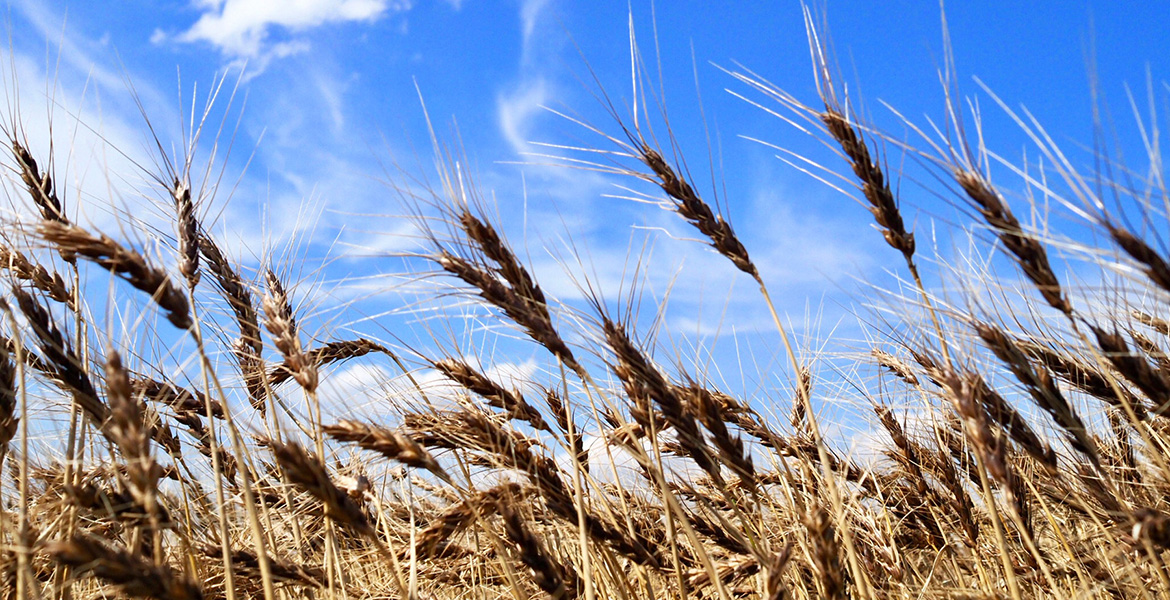
Oklahoma wheat producers expecting modest returns after a tough year
Wednesday, June 6, 2018
Tough.
That sums up the year for Oklahoma wheat producers. As if drought was not enough of a challenge, one of the state’s largest cash crops also faced disease, spring freezes and hail storms.
With harvest shifting into high gear this week, producers are bracing for modest returns as combines rumble through their fields.
“The way I’ve been describing the 2018 wheat crop so far is it’s been a struggle from start to finish,” said David Marburger, Oklahoma State University Cooperative Extension small grains specialist. “There’s been a lot of punches to the body, a lot of punches in places where we don’t normally take them all at one time with a wheat crop in Oklahoma.”
Although the season started off well with good moisture, Marburger said the fall armyworm attacked and stuck around for a long time, and then the weather turned dry for the rest of the fall and winter. Cool temperatures coming out of winter certainly helped give the crop a chance, but an ongoing lack of moisture did not.
Oklahoma experienced the second coolest April on record, including some freezes, followed by the warmest May on record.
“Thinking about overall production compared to the last few years, we’re going to be close to 2014 in terms of total production for the state,” Marburger said. “We might have a little bit better average yield compared to 2014, but our harvested acres will be a lot less.”
Woods County producer Kent Martin, whose crop was not only damaged by drought, but also by a May hail storm, said it has been a challenging year for his wheat operation.
This year, Martin will only harvest two quarters of wheat – and estimated a yield between 25 and 30 bushels. The rest of his crop was either destroyed or grazed by cattle.“I have several fields where it seems like we were so close to a permanent wilting point this year that if we could get a little shower to carry it through we could make grain and really hold on for that next rainfall event,” Martin said. “In certain situations, the fields were just in the wrong place at the wrong time. Even some of those small rainfall events that held some of these wheat fields, then, unfortunately, we had hail come through on the next event which led to the ultimate destruction of that field.”
“It’s not impressive, but in a year where a lot of our estimates from an insurance standpoint are in the single digits, or at best 10 to 12, 30 bushels an acre makes me feel pretty good,” he said.
Meanwhile, in Dewey County, producer Brandon Drinnon is planning to bail half of the 1,500 acres of wheat he planted this year while cattle will graze the other half.
“We’re just shooting for next year. This year is kind of done for us,” he said.
Drinnon estimated the area has received two and a half inches of rain since October and an inch of that fell in the last two of weeks. Beyond a lack of moisture, he also dealt with the effects of a massive wildfire that swept through western Oklahoma in April.
“We fertilized to grow a crop and we planted to grow a crop. We made our decision in the first of March to graze a little more than normal,” he said. “We did graze an extra two quarters after the fire.”
Meanwhile in Washita County, producer Jeff Sawatzky expects to harvest half his wheat crop and graze the other half.
After receiving about 5 inches of rain since November, with most of that moisture coming in the last month or two, and decent weather recently, he is anticipating moderate results.
“I might be optimistic, but I think it could be in the 15 range, which is not great but it’s better than what we thought,” he said. “We have one field that’s a little bit better that was planted in October but never grazed. Then the rest of it, most of Washita County will look like this. It’s thin.”
Tyler Oxford, who raises wheat on his family’s centennial farm in Tillman County, said lack of moisture has been the biggest challenge this year. The area has received only a couple inches of rain since the crop was planted in October.
“When we planted it, we pretty much had to mud it in and that was the last moisture we had until this spring,” he said. “Moisture was definitely the biggest problem we had.”
Still, the operation, which mainly cultivates cotton, is hopeful of reaching a double-digit yield.
“Considering the year, it looks pretty good,” Oxford said of the crop. “Hopefully, we’ll get 25 to 30 bushels. That’d be pretty good for this year.”
As the 2018 wheat crop speeds to its annual early summer close, Marburger said every growing season provides new lessons, and this year is no different.
“We’re definitely going to test drought resistance, for example, in looking at the variety trials. Not only who was able to tiller under these conditions, but also who was able to retain those tillers after the drought and freezes and who was able to fill what potential we had when it turned very hot during grain-fill,” he said. “There’s always something to learn, even in a poor year.”
Story by Leilana McKindra
